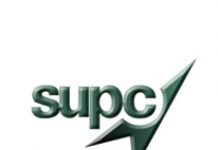In a competitive world, the UK’s universities are rising to the challenge of maintaining their position as world leaders. And so should their procurement teams says Peter Smith.
It is hard to think of many business sectors or areas of endeavour which are truly global, subject to intense competition, and yet see Britain right at the top of the table. But in the university sector, we have arguably three of the top five organisations in the world, as measured by various surveys and reports and have a higher proportion of top 50 or 100 than any other country… except (perhaps) the USA – which is five times larger than us of course!
That’s great news and although we might argue that some of the success is down to historical accident and the prevalence of the English language, the hard work and brilliance of many people working in that sector must be applauded.
So really, we should aim for procurement in the sector also to be world leading, shouldn’t we? That may seem a bold aim, but I can’t see any reason why we should not have that as an aspiration and a challenge.
If we accept that, then how would procurement in the sector demonstrate it has reached such an ambitious goal? There are many possible answers to that, but before we get into some of those, let’s try and define what the aim of procurement should be more generally. Here is one definition: procurement optimises the contribution that external markets and suppliers make towards our organisation’s achievement of its strategic goals.
Strategic goals
This means that for procurement to succeed in its future challenge, it must demonstrate that it is contributing to the wider strategic goals of the university sector and individual institutions. So immediately we can see it cannot be simply based around “cost savings”. Of course, cost management and effectiveness will be important, but in addition, the function and the professionals within it need to address the following:
-
Show that they are facilitating suppliers who can help to drive revenue growth, student satisfaction, ratings in the league tables, attracting of the best academics … not everything that is purchased impacts on these strategic goals, but much does. It is certainly not about lowest cost in these spend areas.
-
Help to build and protect the organisation’s reputation – both through risk management (avoiding bad things happening connected with suppliers) and promoting positive brand building.
-
Collaborating where it makes sense to drive efficiency and effectiveness; an area where the sector has certainly made positive strides in recent years.
-
Being aware of the “social policy” aspects of procurement. For instance, there is no doubt that every organisation should be looking for those (often small) innovative suppliers who can really make a difference. Indeed, universities may be uniquely well-placed to help the development of such firms. But we must also be aware that getting over-obsessed about buying from local firms, or social enterprises, without asking the question, “are they any good” does not help anyone.
-
Where appropriate, looking to manage and drive down costs, both the purchase price and the transactional cost of doing business – simplifying processes and automation here can also be very positive for the internal users of procurement’s services.
Taking all this into account, it is vital therefore that procurement leaders think hard about how they segment their procurement spend in terms of these different strategic drivers and objectives. There is no magic one-size-fits-all approach to developing a truly world-class procurement organisation.
Key enablers
There are two key enablers though which are essential if the sector is going to meet these challenges. People, and the skills, knowledge, capability and experience they possess, is the biggest single determinant of success. Investment in that area will need to continue and probably grow further.
Then, to support the people, we need the right tools, which these days means technology in the main, from purchase to pay to sourcing, supplier management to spend analytics, as well as new tools such as those that bring social media principles to the procurement and supplier management world.
Put all this together and I’m sure procurement in higher education can continue to improve and develop, meet those challenges and be seen as the best in the world – just like our universities themselves.
Peter Smith is managing editor of the website Spend Matters Europe
Photo credit: 2013 Green River Festival via photopin (license)








